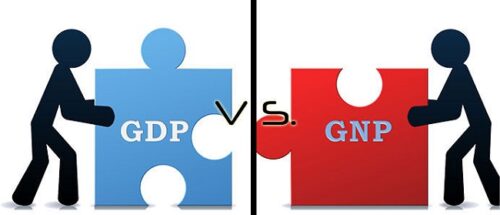UNDERSTANDING GDP AND GNP: KEY DIFFERENCES AND IMPORTANCE
Understanding GDP and GNP: Key Differences and Importance
Gross Domestic Product (GDP) and Gross National Product (GNP) are essential economic indicators that provide insights into the economic performance and well-being of a country. While they both measure the economic activity of a nation, they have distinct differences and serve unique purposes. In this article, we will delve into the key differences between GDP and GNP and explore their importance in assessing a country’s economic health.
Key Differences between GDP and GNP:
- Definition:
- GDP: GDP measures the total economic output of a country within its geographical borders. It encompasses all economic activities that take place within a nation’s territory, regardless of whether the production is carried out by domestic or foreign entities.
- GNP: GNP, on the other hand, takes into account the total economic output generated by a country’s residents and businesses, regardless of where they are located globally. It considers both domestic and overseas economic activities.
- Citizenship vs. Location:
- GDP: GDP focuses on the location of economic activity. It includes the production that occurs within a country’s borders, regardless of who is conducting it.
- GNP: GNP, in contrast, concentrates on the citizenship of economic agents. It considers the income earned by a nation’s citizens, whether they are located within the country or abroad.
- Importance of Nationality:
- GDP: Nationality plays no role in GDP calculations. It doesn’t matter whether the economic agents are domestic or foreign; all economic activities within the country are included.
- GNP: GNP is particularly concerned with the nationality of individuals and businesses. It measures the economic contribution of a country’s citizens, even if they are working and earning abroad.
- Impact of Foreign Activity:
- GDP: Foreign production within a country’s borders contributes to GDP. This means that the GDP of a nation can be influenced by the presence of foreign companies and investments.
- GNP: GNP reflects the income earned by a country’s residents both at home and abroad. This makes it sensitive to the economic activities of a country’s citizens on a global scale.
Importance of GDP and GNP:
- Economic Performance Assessment:
- GDP and GNP serve as essential tools for evaluating a nation’s economic performance and growth over time. By tracking changes in these indicators, policymakers and economists can assess the effectiveness of economic policies and make informed decisions.
- Comparative Analysis:
- These indicators facilitate comparisons between different countries’ economic performance. They enable us to gauge which countries are more economically productive and competitive on a global scale.
- Foreign Investment Attraction:
- Countries with high GDP and GNP figures are often seen as attractive destinations for foreign investment. These indicators provide insights into the potential returns on investment within a nation.
- Income Distribution Analysis:
- GNP, in particular, sheds light on how income is distributed among a country’s citizens, including those working abroad. This information can be crucial for addressing income inequality and formulating social policies.
- International Trade and Diplomacy:
- GDP and GNP figures influence a nation’s ability to engage in international trade and diplomacy. Strong economic performance can enhance a country’s negotiating power on the global stage.
Understanding the differences between GDP and GNP is crucial for assessing the economic health and performance of a nation. These indicators serve distinct purposes and provide valuable insights into a country’s economic activity, income distribution, and global competitiveness. Policymakers, economists, and investors rely on these metrics to make informed decisions and understand the broader economic landscape.


